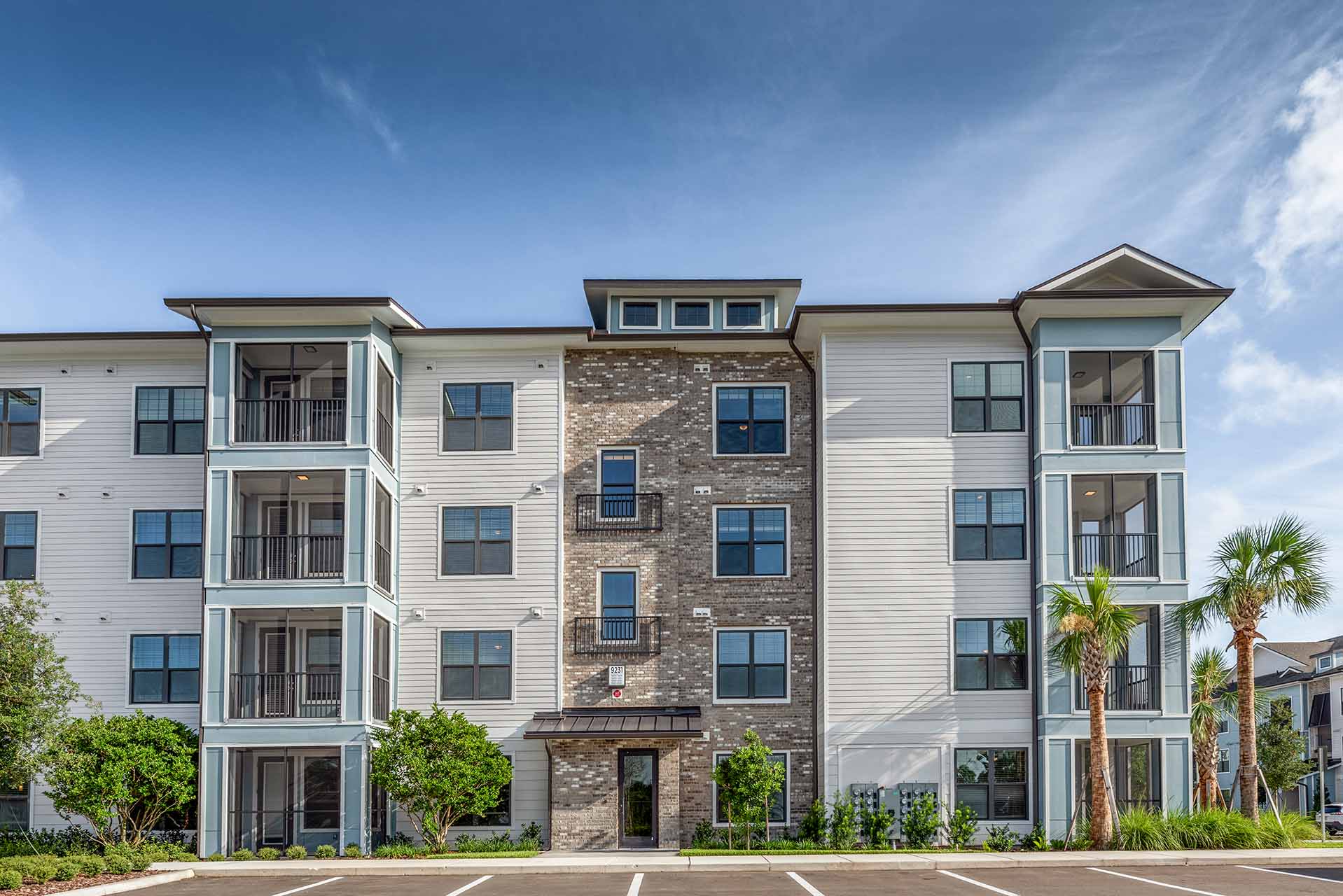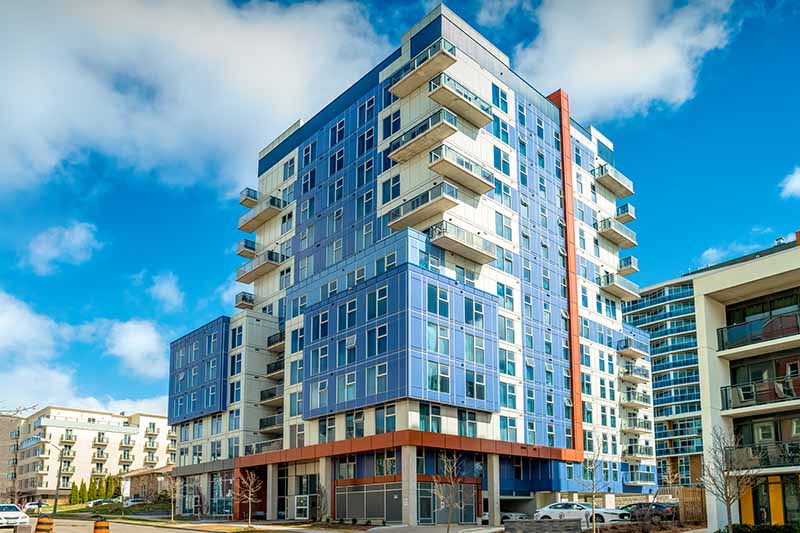Over the past seven years, numerous white papers have been published attempting to explain the factors contributing to significant inflation in property insurance costs, with some reports indicating increases as high as 50% year-over-year. Homeowners are acutely aware of these rising costs, yet frustration continues to mount amongst property owners nationwide. According to an analysis from Bankrate, the average premium for single-family residences has increased by 23% year-over-year as of February 2024.
The commercial insurance markets are no different. According to CBIZ the first quarter of 2023 saw an average increase of 20.4% representing the first time in two decades that the segment saw rate hikes over 20%. During the latter half of 2023, inflation persisted but dipped down to 18.3%. The chart below from Jencap was originally published in the Commercial Property/Casualty Market Index outlining premium changes for commercial property between Q1 of 2017 and Q1 of 2023.
Premium Change for Commercial Property Q1 2017 - Q1 2023
No Data Found
Reinsurance Market Overview
The 800lb gorilla in the insurance conversation is the somewhat esoteric reinsurer. Reinsurance is colloquially known as “insurance for insurers.” The role of reinsurers is crucial in determining insurance rates for U.S. commercial real estate.
Factors influencing global reinsurers’ willingness to provide reinsurance coverage are detailed in the following sections. These factors are ones that impact reinsurance availability and pricing for specific markets. Events that occur on the other side of the planet can have an impact on the rates you pay locally as insurers and reinsurers look to offset losses globally. Additionally, natural disasters in densely populated areas during inflationary periods can significantly affect local insurance rates. All of this to say, the reinsurance market is deeply interconnected.
According to Jencap, during the January 1, 2023, reinsurance renewal period, the reinsurance property market in North America saw an average price increase of 40%-60%. In the same report it was shared that “the overriding message is that reinsurers are looking for half the limit, double the premium, and double the retention.” Most experts expect this to abate as inflation eases and property valuations are improved, gradually.
Climate Change & Natural Disasters
The dominant driver of losses for insurance companies in 2023 was severe convective storm (SCS) peril, which accounted for roughly 58%, or a record $71B of the global insured loss total. (Alliant 2024 Start of the Year Report). Six of the top 10 most expensive insured events of 2023 were SCS events in the U.S. Keep in mind, this was in a year where very few major hurricanes made landfall.
The largest natural disaster in the world in 2023, an earthquake on the Turkey-Syria border, resulted in $5.5B in insured losses. The second largest natural disaster was Typhoon Doksuri, which sideswiped the Philippines before triggering destructive flooding in China, causing $2B in insured losses. Of note, Typhoon Doksuri caused $25B in total losses, highlighting the major insurance protection gaps discussed later when examining property valuation.
Bringing the conversation back to the U.S., the below table shows the growth of insured property losses due to natural catastrophes from 2013 – 2022. The numbers are in billions. Slowly but surely, insurers have been passing these costs to their customers.
Loading..........
The Data is Not Available
Inflation & Supply Chain
The chart below comes from Statista and represents the lumber price history (in US dollars per 1,000 board feet) from 2019 to 2023. At the time of this writing the cost is back above $550 per thousand board feet. The chart for rolled steel looks very similar to the above chart with the recent trend being upward sloping.

Insurance companies utilize advanced computer models to estimate replacement costs for buildings that are damaged or destroyed, ensuring they are of the same or comparable quality. However, accurately modeling input prices for materials such as lumber, steel, and gypsum (for drywall) has proven extremely challenging without taking into consideration the current wage levels and availability of local contractors and personnel.
A 2023 trade association report indicates that one in four construction workers is over the age of 55, with insufficient numbers of younger workers entering the field to replace them. Depending on the data source, the industry is about 500,000 workers short of what is needed to keep up with demand. To lure more workers, higher wages are being offered, which, of course, increases upward pressure on prices.
There is good news here. Much of the disruptions experienced in early 2020 was the result of the historic supply-chain crisis that followed the outbreak of COVID-19. Many analysts expect wage inflation to abate in late 2024 onward, which bodes well for future property insurance rates.
Property Valuations
Simply put, the U.S. real estate market prior to 2017 was significantly underinsured. According to Chubb, as late as 2021, it was estimated that commercial properties were undervalued for insurance underwriting purposes by more than 30%.
Chubb identifies two main reasons for this underinsurance. First, economic considerations led insured parties to intentionally undervalue their properties to minimize insurance costs. Second, there is often a misunderstanding of what is being insured. For example, the insured amount should reflect the cost of rebuilding or replacing the property with materials of similar kind and quality, rather than the market or book value listed on the balance sheet.
The result has been an increased emphasis on annual third-party valuations that accurately assess the replacement cost of insured structures, leading to upward pressure on premiums.
Politics
The political environment also plays a significant role. The American Federation of Tort Reform publishes a list of “Judicial Hellholes,” ranking states based on their tendency to expand liability through the courts and legislature. The rankings are generally unsurprising, with California, Cook County, Illinois, and Georgia consistently appearing in the top five. In contrast, states like Florida and Texas rarely make it to the top of this list, once again not surprising.
According to Alliant, jurisdictions with unfavorable legal environments will continue to face tough renewals, while those with more favorable conditions will find benefit from better rates and greater competition.
2024 Forecast
Rate increases are expected to persist in 2024, albeit not at levels observed in recent years. The 2024 U.S. Property and Casualty Outlook from Swiss RE should be music to the ears of commercial property owners, projecting an average growth rate of roughly 8% 2024, with even lower increases expected in 2025. This is a significant improvement from the 20% rate hikes we saw last year.
The news isn’t quite as good for personal auto and life policies, but that is a subject for another day.




